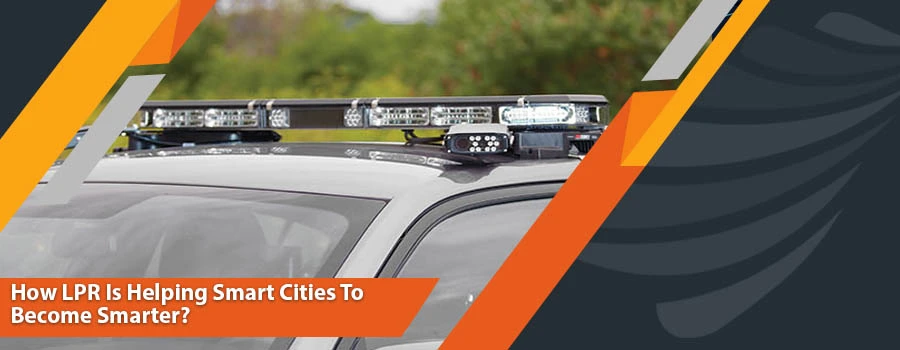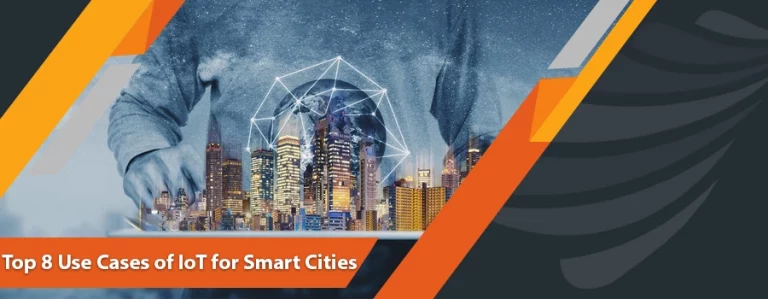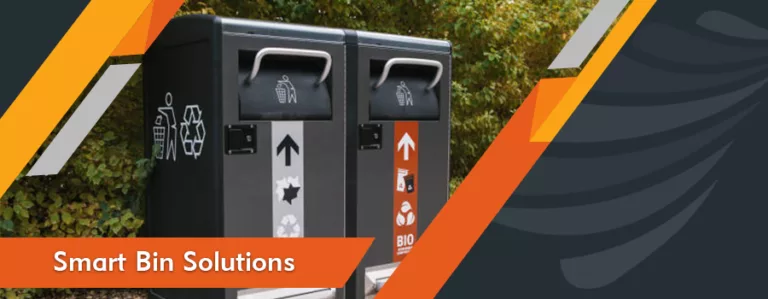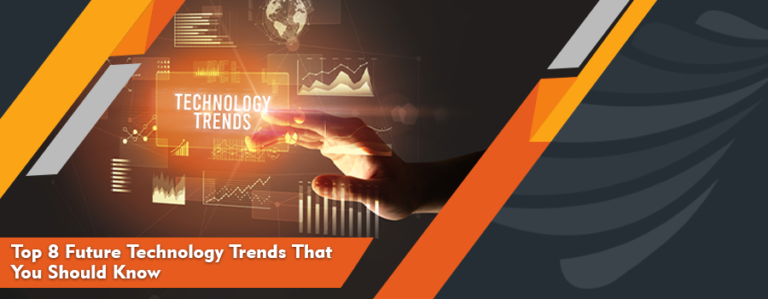With time, the number of vehicles on the road is increasing, making urban life more complicated and unsustainable. Several factors contribute to the complications of city life, however, the major contributors are pollution and overpopulation. To cater to these challenges, it has now become a need for the cities to become smarter.
The majority of the city’s challenges come from vehicles (pollution, high traffic and security etc.). In response to this situation, municipalities are working on innovations that can transform the cities into intelligent entities. License Plate Recognition (LPR) or Automatic License Plate Recognition (ANPR) is considered the most powerful tool for making the smart city smarter and minimizing the negative impacts of the aforementioned challenges on the cities. LPR technology or LPR camera has been incorporated into the cities to build solutions that may lead to nicer, cleaner, safer and sustainable cities in the future.
LPR is the smart city surveillance, having the possibility to link the license plate of the vehicles to the associated data, for instance, car owner, car type, location, authority and parking status of the vehicle. The enormous amount of data collected from LPR opens whole new world of opportunities for smart city solutions. Undoubtedly, LPR works more than just reading license plates, hence, the following article highlights different ways in which the LPR is making smart cities smarter.
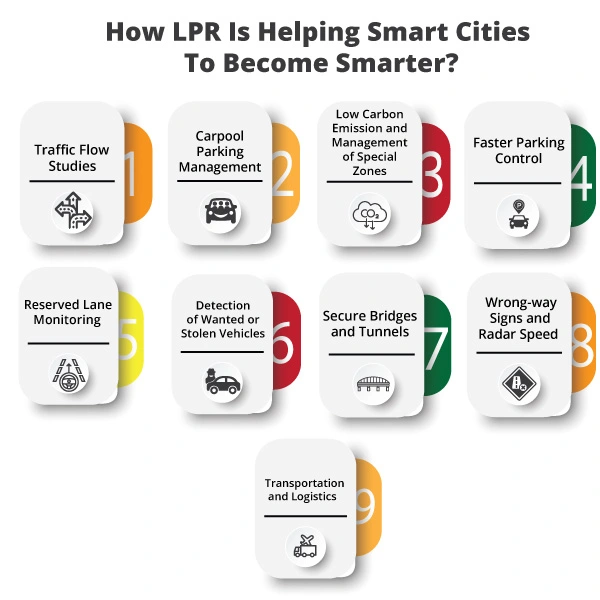
1. Traffic Flow Studies
The collection and analysis of data about the traffic flow are becoming increasingly important to identify the traffic congestion points and risk of accidents beforehand. For traffic studies, LPR is the most viable data collection tool. LPR cameras or ALPR systems equipped in smart cities are operational 24/7 and collect data about several key points for traffic management. This system enables smart cities to collect reliable and accurate information which lead to a greater understanding of the traffic flow. This information also becomes the basis for creating better city traffic policies and fighting air pollution.
2. Carpool Parking Management
IoT has revolutionized the parking management systems in smart cities. Car sharing or carpooling is another transportation method that is becoming trending nowadays. However, for parking owners and managers, carpool parking is terrifying. LPR provide better service and more precise control to the user using the online city platforms for transportation services as the technology provides accurate information about the vehicles involved in carpooling. Carpool parking powered by ALPR enables users to access safe parking spots in the city immediately, free from parking hassles.
3. Low Carbon Emission and Management of Special Zones
Every vehicle does not need to access every corner of the smart city. This is because some areas in the city require a pollution-free environment. With the help of LPR, the authorities or the patrolling officers can identify the vehicles which emit excess carbon dioxide and pollute the area unfit for the environment. Furthermore, other license plates based restrictions in downtown and special areas can also be imposed with the help of LPR. By recognizing the license plate, the system highlights and prioritize the vehicles allowed in the particular area. In this way, the traffic is reduced which also reduces the pollution.
4. Faster Parking Control
Smart parking control and enforcement systems are gaining immense popularity in the development of smart cities in recent times. LPR cameras equipped in the parking lots and surrounding areas allows the parking control agents to detect nearly 1000 license plates of the vehicles in a short time and check their authority or status against the given list of the authorized cars. This enables the patrolling officers to achieve the desired level of effectiveness for parking management instead of using traditional methods of checking the authority of the vehicles.
5. Reserved Lane Monitoring
One of the most important traffic solutions that are implemented in smart cities is reserved channels. These areas are restricted and are not accessible to vehicles such as buses, taxis and shared cars. Usually, in such settings, the LPR cameras are equipped at the entrance of the restricted area. The system scans the vehicles entering the reserved lanes, read their license plates and inform their authorities if any vehicle is violating the traffic or parking regulations. The ALPR system certainly reduces the burden on the patrolling officers as now there is no need of monitoring the vehicles manually.
6. Detection of Wanted or Stolen Vehicles
License plate recognition systems can also be used to detect the location of the vehicles that are either wanted or stolen. It is extremely difficult for law enforcement agencies to trace the wanted or stolen vehicles in the big cities. To resolve this issue in the smart city, LPR cameras can be installed in the key city points which can monitor the license plate and transfer the real-time data to the security systems. As soon as the license plate of the stolen or wanted vehicle is identified by the system it is immediately sent to the authority’s hotlist. This enables the law enforcement agencies to take timely and secure actions to recover the stolen vehicle or catch the culprit running away in the car.
7. Secure Bridges and Tunnels
The installation of the LPR cameras at the entrance and exit of the tunnels and bridges have proven to be extremely advantageous in term of city security. It has been mentioned previously that license plates recognition systems have more capabilities other than just reading license plates. Referring to this, it can be observed that the LPR cameras installed around bridges and tunnels can measure the time spent by each type of vehicle inside the structure, their speed and the probability of accidents. The whole analysis is done within seconds and it is more effective than human visual monitoring.
8. Wrong-way Signs and Radar Speed
In big cities, keeping the track of every parking or traffic violation has become difficult. To prevent accidents, it has become necessary for the authorities to warn the driver before they commit any traffic violation (going in the wrong direction and overspeeding). Real-time speed monitoring signs with LPR cameras can tell the drivers about their speed limit and immediately give them a heads up if they are driving above the speed limit on a particular road.
9. Transportation and Logistics
In smart cities, the companies that deal with logistics can benefit a lot by incorporating LPR technology. ALPR can capture the movements of the vehicles to simplify transportation management and trace the certain moments when the vehicle leave or arrive at a particular area. It can speed things up in logistics and can also improve the courier systems as the companies will be able to know when the vehicle arrived or left the premises.
In Conclusion…
The maximum potential of smart city transportation has been driven out by ALPR and the use cases are enormous. With LPR, the parking system in smart cities has become fully automated. Apart from this LPR system hold the potential to make the cities more secure for the citizens by providing a hassle-free parking experience and a smooth flow of traffic. LPR is also reducing the burden on the patrolling officers as they can now automatically identify unauthorized vehicles immediately instead of using manual methods. Indeed, LPR and other surveillance technologies are aimed to make smart cities smarter.

